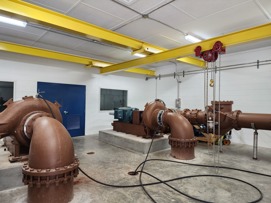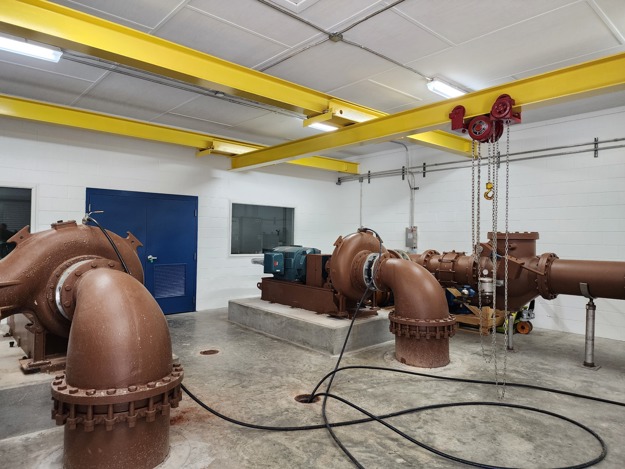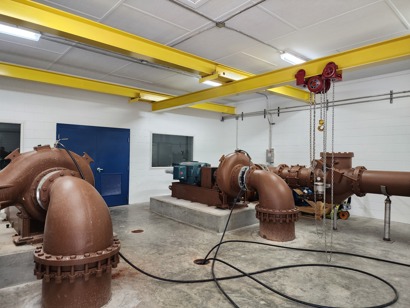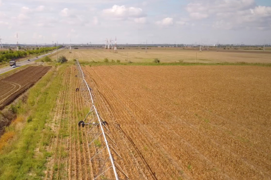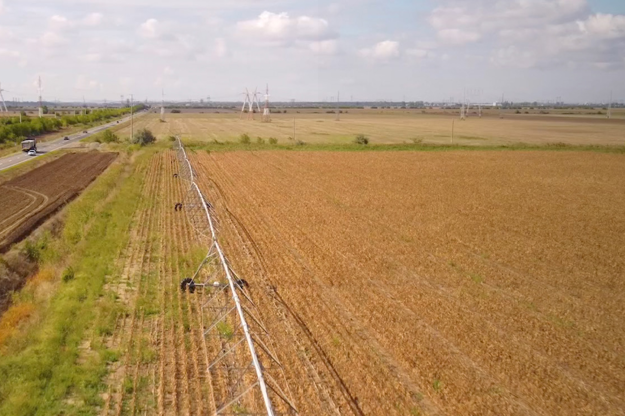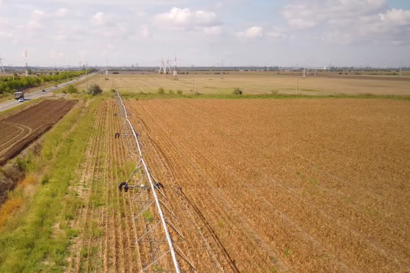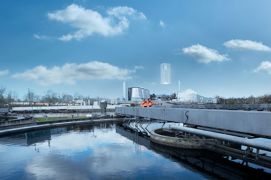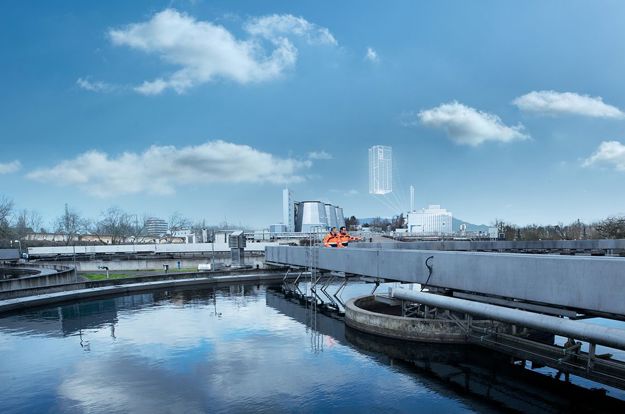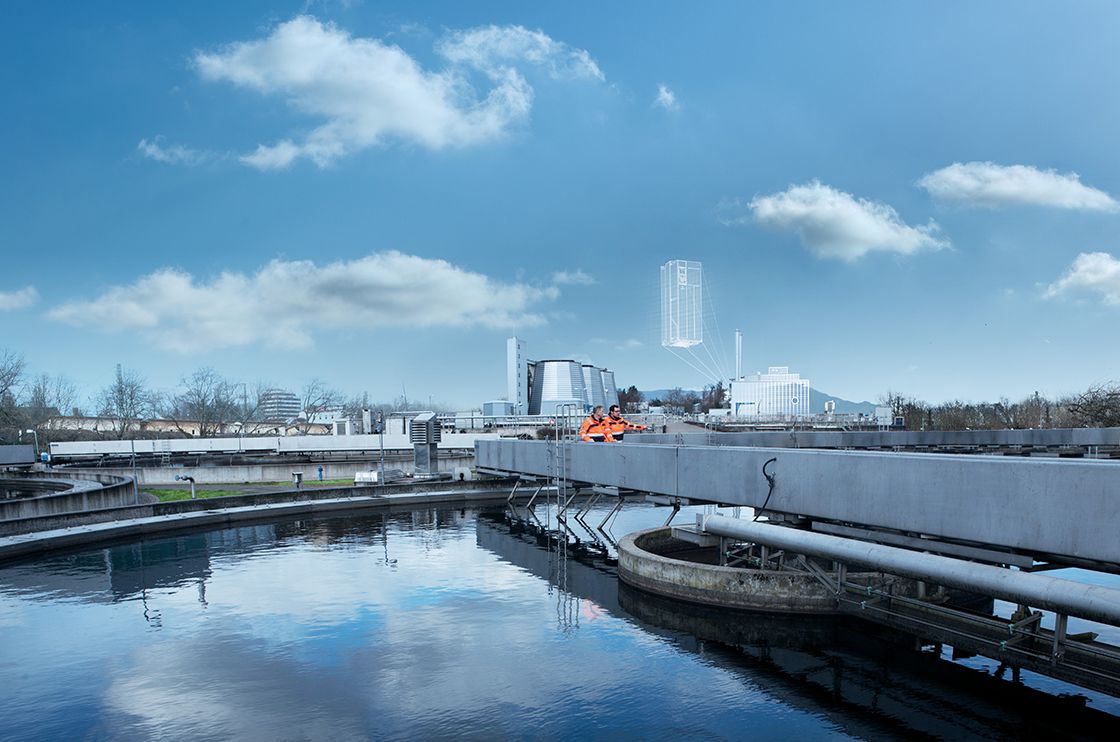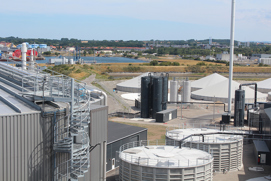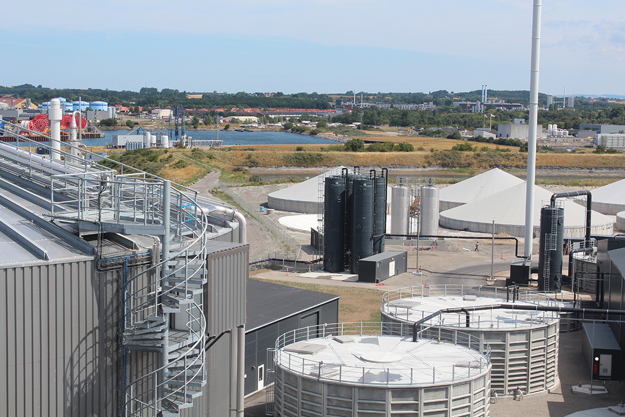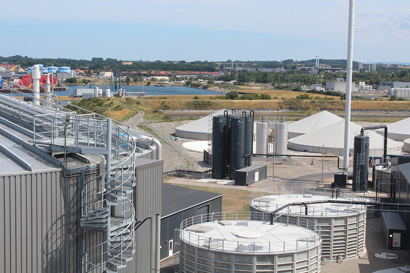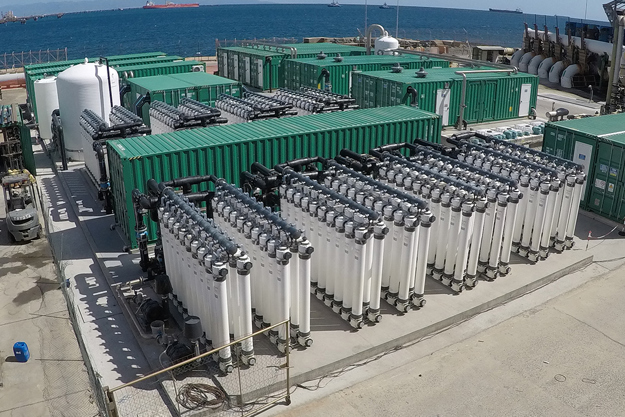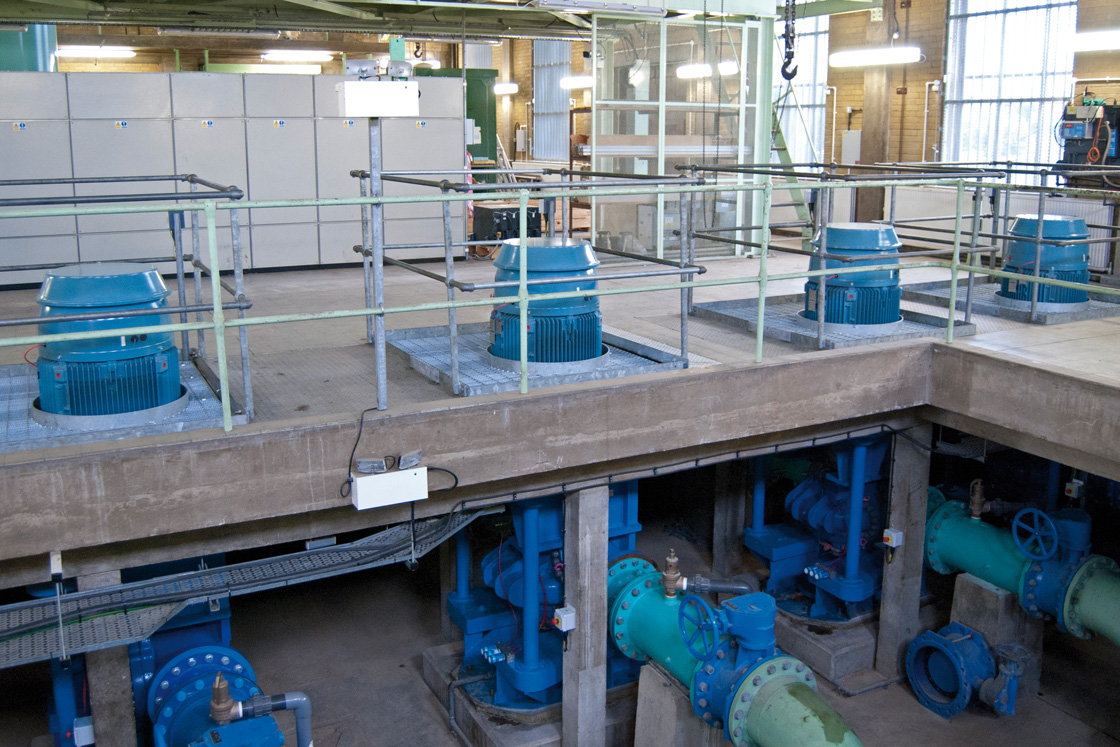自2010年以来,玛尔丽斯堡污水处理厂已将其重点从最大限度地减少能源消耗转向最大限度地实现净能源剩余。如今,该厂同时能够发电和生产热能,为丹麦第二大城市奥胡斯的区域供暖系统供电,相应减少了35%碳足迹。
水和废水处理设施通常是一个城市最大的用电大户。水和废水处理工艺通常占城市用电量的25–40%。高消耗与能源密集型工艺有关,但也与其每年24/7和365天的连续运行周期有关。
多年来,人们一直致力于开发新的工艺和控制策略,以减少每公升处理水的能耗。与此同时,对污水处理质量的要求也在日益增长,例如在去除杂质的同时也增加了能耗。
优化能源中和
水和污水处理过程的特点是全年侯24小时不间断高负荷运转。因此,对变频器的需求量也在逐步递增,因为水处理厂需要利用变频器加强对风机、泵和其他设备应用的控制,以适应不断变化的需求。
自2010年以来,奥胡斯水务公司一直与水环境顾问密切合作,以改善玛尔丽斯堡污水处理厂的能源中和。

了解AQUA变频器的最新功能
我们的VLT® AQUA变频器采用最新的边缘计算专利技术进行更新。通过监测您的电机和泵,为您的设施提供持续稳定的运行时间,并节省运营成本。使用边缘计算解决方案,数据每秒收集数次,任何超出正常范围的测量都会触发警告,从而将未监测到异常的风险降至最低。
Key steps in the strategy
- Optimization of the nitrogen removal process using online sensor control. The frequency converter adapts the level of aeration precisely to the need. This control system reduces energy consumption and increases the amount of carbon left in the system.
- Blower technology upgrade to a high-speed turbo blower. The upgrade achieves further reduction of energy consumption in the aeration process.
- Aerobic sludge age control as a function of temperature and load on the plant. Here frequency converter control of the return sludge pumps is the key to achieving energy reduction and increased retained carbon in the system.
- Upgrade of combined heat and power (CHP) process for energy production, with 90 % energy efficiency.
These changes together with improvements including the effective co-production of electricity and heat based on methane gas extracted from the aerobic sludge digestion process have created the impressive results of:
- 130 % electricity production (30 % excess electricity)
- Excess heat production of about 2.5 GWh/year
VLT® in every corner
Frequency converters are installed on almost all rotating equipment at Marselisborg WWTP: blowers, pumps, mixers and dewatering pumps. The frequency converters allow the plant to adapt to load variations, with maximum flexibility. Over 100 motors are controlled by VLT® frequency converters at Marselisborg.
Energy generation vision
The vision for Aarhus City is to extend energy generation even further, to achieve surplus production of energy from its wastewater treatment plants so high, that it can also meet the energy requirement of the city’s potable water supply. This will transform the single largest electricity consumer for the authority into an energy-neutral party.
Get more information
Related case stories
-
if (isSmallPicture) {


 使用丹佛斯 VFD 和内置净化功能打破泵堵塞循环
使用丹佛斯 VFD 和内置净化功能打破泵堵塞循环Grand Strand Water and Sewer Authority 位于南卡罗来纳州 Myrtle 海滩,其下属的主要污水减压站之一为满足需求勉力支撑。Myrtle 海滩是一个热门旅游目的地,每天消耗约 1500 万加仑 (MGD) 水,即每年 55 亿加仑水。南部区域减压站 (South Regional Pressure Reducing Station) 处理约 3 MGD,由吸入压力和 PID(比例积分微分)回路控制。其目的是降低下水道区域南侧的压力,以便其他水站能够抽送更多水。
-
if (isSmallPicture) {


 Sincrondraiv SRL 如何将灌溉泵送效率提高 40%?
Sincrondraiv SRL 如何将灌溉泵送效率提高 40%?罗马尼亚:数字化灌溉系统有助于农民获得更好的收成。现在,泵站的能耗减少了 30-40%,用水效率也变得更高。
-
if (isSmallPicture) {


 玛尔丽斯堡 通往能源中和供水行业的途径
玛尔丽斯堡 通往能源中和供水行业的途径玛尔丽斯堡污水处理厂使用丹佛斯的 VLT® AQUA Drive FC 202,从能源消耗者转变为能源生产商。 在此处了解更多相关信息。
-
if (isSmallPicture) {


 Kalundborg 沼气厂装置确保了所有营养物质回归自然
Kalundborg 沼气厂装置确保了所有营养物质回归自然丹佛斯的交流变频器有助于将生物质从胰岛素和酶的生产转化为能量。
-
if (isSmallPicture) {


 Sarlux 炼油厂采用一天 12000 m3 的工业海水淡化装置,节约能源
Sarlux 炼油厂采用一天 12000 m3 的工业海水淡化装置,节约能源通过丹佛斯解决方案,Acciona 能为撒丁岛的 Sarlux 精炼厂打造创新的海水反渗透 (SWRO) 模块化海水淡化厂,与传统解决方案相比,并能降低能源消耗。
-
if (isSmallPicture) {


 Affinity Water 使用丹佛斯变频器节省 30 万英镑
Affinity Water 使用丹佛斯变频器节省 30 万英镑最近在 Affinity Water 的 Chertsey 水处理工程中安装的 VLT® AQUA 变频器可节省超过 30 万英镑的运营成本。

